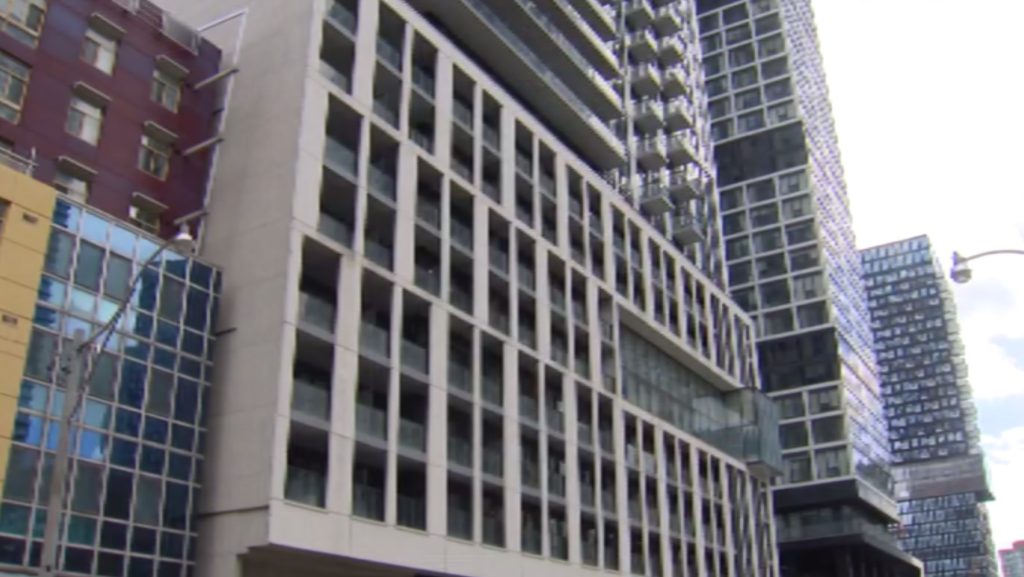Health minister: ‘Glimmers of hope’ as Ontario nearing peak of Omicron

Posted January 19, 2022 9:03 am.
Last Updated January 19, 2022 3:21 pm.
Ontario’s health minister says recent COVID-19 data trends suggest the province is nearing the peak of the Omicron fifth wave.
“We’re starting to see glimmers of hope,” said Health Minister Christine Elliott on Wednesday.
She says new hospitalizations are starting to slow and are doubling at a much slower rate than earlier this month, but the toll the virus is taking on the health-care system will likely extend into next month.
“I do want to be clear, February will continue to pose challenges, especially for our hospitals as people continue to require care of COVID-19.”
Elliott made the comments alongside Chief Medical Officer of Health Dr. Kieran Moore during a COVID-19 update from Queen’s Park.
Dr. Moore says cases in the intensive care unit are also increasing at a slower pace. He says the average length of stay in hospital for COVID-19 patients is now five days with the Omicron variant, compared to nine days with Delta.
“I’m starting to have more hope and cautious optimism,” Moore said.
As of Wednesday, 4,132 people are in the hospital with the virus in Ontario, down from a pandemic high of 4,183 reported one day ago. There are 589 COVID-19 patients in the ICU.
Ontario reported 60 new COVID-19 deaths on Wednesday, the highest during the Omicron wave and the most in the province in nearly one year.
Moore said he is trying to determine what is behind large daily numbers of deaths reported this month, including the vaccination status of people who died and whether COVID-19 caused the death or was associated with it.
But he said he believes a “significant proportion” are related to the Delta variant.
“As we all remember, we had that Delta rise at the end of December, and then Omicron took over Delta, (which) is a much more severe pathogen, had a higher death rate associated with it,” Moore said.
“(When) someone gets admitted to hospital, then often they’ll get transferred to the intensive care unit, then they if they deteriorate, they get intubated to be able to maintain oxygenation levels. And then they either pull through or sadly, a significant proportion die and that process often takes four to six weeks.”

Matt Anderson, the CEO of Ontario Health, which manages the province’s health system, noted that at the peak of the third wave there were nearly 900 COVID-19 patients in ICUs.
“However, it’s important to remember that even while these key measures are trending in the right direction, we don’t feel that in the hospitals,” he said.
“We don’t realize these benefits for a number of more weeks. We still have hospitals that are under very challenging circumstances as we deal with these rising numbers.”
The update from provincial health officials comes after Premier Doug Ford said an announcement on current restrictions would be made by the end of this week.
The Premier told Ottawa radio station CFRA Tuesday that “We’ll have some positive news. I believe we’re going to make some announcements later this week about going back to other levels of restrictions.”
Elliott would not expand on the possibility of rolling back restrictions when asked Wednesday but did say a decision about how the province will move forward is coming soon.
Last week, Dr. Moore said he expects Ontario will have greater clarity on the impact of the restrictions this week. At that point, he said the province would be better able to determine how and when to proceed with lifting restrictions.
Ontario has been in a modified step 2 of pandemic restrictions since Jan. 5, closing restaurants to in-person dining, shutting gyms and putting a 50 per cent capacity on retail. The restrictions were said to be in place until at least Jan. 26.
When asked Wednesday about the potential lifting of measures on Jan. 26, Dr. Moore would only say the decision lies with the Ford government.
“I can’t make any foreshadowing of that statement,” Moore said.
NEW – I asked Minister Elliott how any decision can be made on easing restrictions when there’s no data yet from the return to school.
“We are very pleased that the students are going back” “There’s very little evidence that there’s high transmission just in schools themselves”
— Richard Southern (@RichardCityNews) January 19, 2022
The province has yet to see the impact of kids back in the classroom during this latest Omicron surge. Ontario students were set to be back in classrooms on Monday, but a winter storm delayed the return in many parts of southern Ontario to at least Wednesday.
The health minister was asked if the province has enough data to consider lifting restrictions before the impact of in-person learning can be measured.
“We are very pleased that the students are going back for all the reasons indicated by Dr. Moore,” Elliott said. “There is very little evidence that there is high transmission just in schools themselves.”
Dr. Moore, along with Education Minister Stephen Lecce, confirmed in an open letter to parents and guardians on Tuesday that school-based vaccine clinics are being launched as students head back to class.
Lecce added that more than 3.9 million rapid antigen tests are reserved for school boards this week, with additional tests delivered the following week. Each student will be going home with two rapid antigen tests over the coming weeks.
Files from The Canadian Press were used in this report








